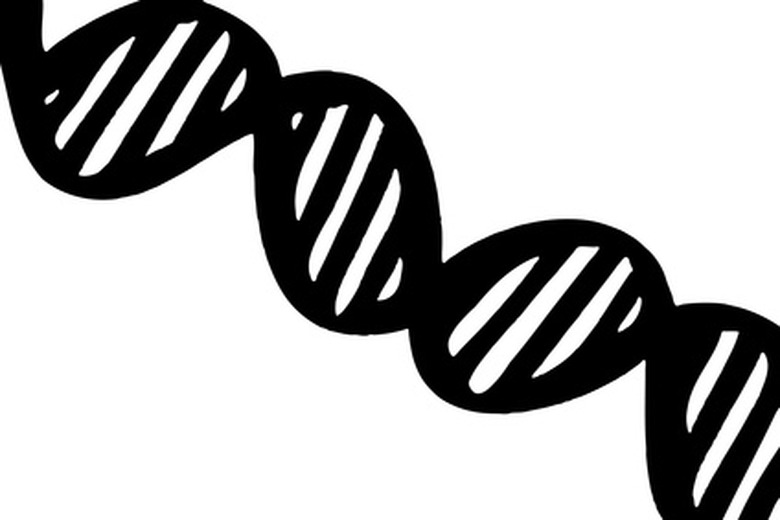How To Design A PCR Primer
According to the University of Wisconsin's BioWeb website, a PCR primer is a short, synthetic oligonucleotide (usually between 18 to 25 bases long) used to amplify specific regions of DNA in a molecular biology technique known as polymerase chain reaction (PCR). Both a forward and reverse primer are needed, designed to be reverse complements of the DNA strand, to flank and bind to the desired DNA region. When scientists want to perform research on a specific gene or region of DNA, they first need to perform PCR to acquire enough of the target region to work with. Designing primer sequences for the region of interest may be necessary if they are not already available through previously published research or by commercial means.
Step 1
Obtain the nucleotide sequence of the gene or DNA region of interest and decide how long a fragment you wish to amplify. The forward and reverse primer is designed to bind at the beginning and at the end of the desired fragment. Typically, conventional PCR methods use primers that flank a region between 100 to 1,000 base pairs long, while real-time PCR methods use fragments about 50 to 200 base pairs long.
Step 2
Decide where in the sequence you want the primers to lie. For example, you might want the location near the 5' or the 3' end of the sequence or in the middle. If desired, designate the location of the primers to span an intron.
Step 3
Follow the recommended guidelines for primer design. Successful amplification of DNA product depends on the quality of the primers and certain variables are critical.
Step 4
Design primers to be 18 to 24 bases in length. Vincent R. Prezioso, Ph.D., from Brinkmann Instruments Inc., suggests that this length is long enough to be extremely specific to the desired DNA region, but short enough to bind (anneal) easily. Primer melting temperature (Tm) should be between 55 to 80 degrees Celsius, low enough to allow complete melting at or above 90 degrees Celsius, but high enough to allow annealing. The GC content (percentage of Gs and Cs in the sequence) should be between 40 and 60 percent. The 3' end of the primer sequence should end in a C or a G (called a GC clamp) to promote binding, since the G and C nucleotides have stronger bonds, however, avoid having three or more Gs or Cs in the last five bases of the sequence.
Step 5
Avoid having runs of four or more of one base (like ACCCC...) or four or more di-nucleotide repeats (like ATATATAT...) because they can cause mispriming. Design primers with no intra-primer homology (more than three bases that complement within the one primer itself) or inter-primer homology (where the forward and reverse primer have complementing sequences). This can cause self-dimers or primer-dimers, where the primers bind to themselves instead of binding to the desired DNA sequence.
Step 6
Use online resources and websites that assist in primer design or help check primer sequences for self-complementarity or the potential to make secondary structures like hairpins. Some primer design websites include Massachusetts Institute of Technology's Primer3, National Center for Biotechnology Information's Primer-Blast and Integrated DNA Technologies' OligoAnalyzer.
Things Needed
- Nucleotide sequence of target DNA region
- Primer design software or website
Cite This Article
MLA
Quinlan, Sarah. "How To Design A PCR Primer" sciencing.com, https://www.sciencing.com/design-pcr-primer-6456371/. 24 April 2017.
APA
Quinlan, Sarah. (2017, April 24). How To Design A PCR Primer. sciencing.com. Retrieved from https://www.sciencing.com/design-pcr-primer-6456371/
Chicago
Quinlan, Sarah. How To Design A PCR Primer last modified August 30, 2022. https://www.sciencing.com/design-pcr-primer-6456371/
